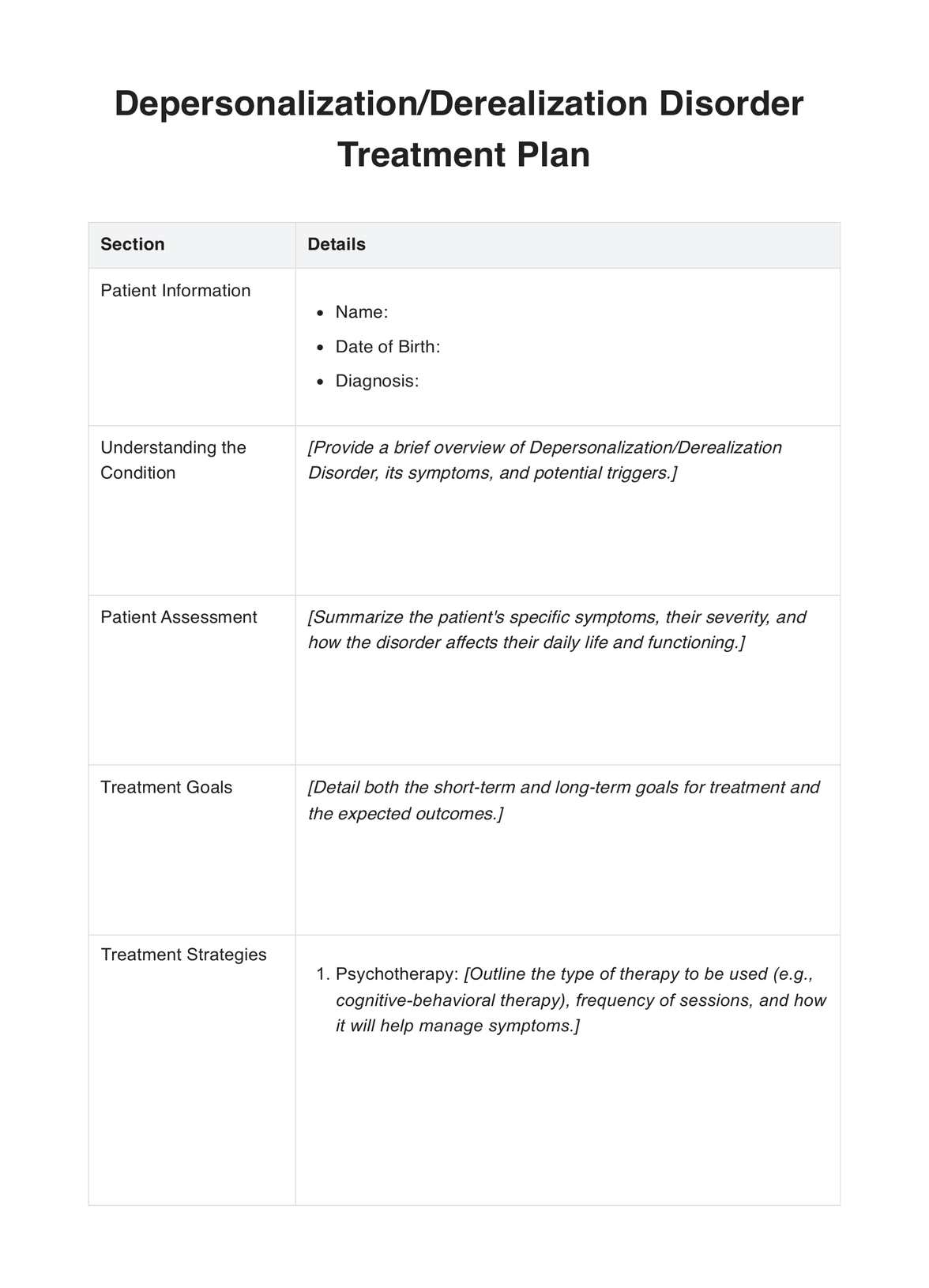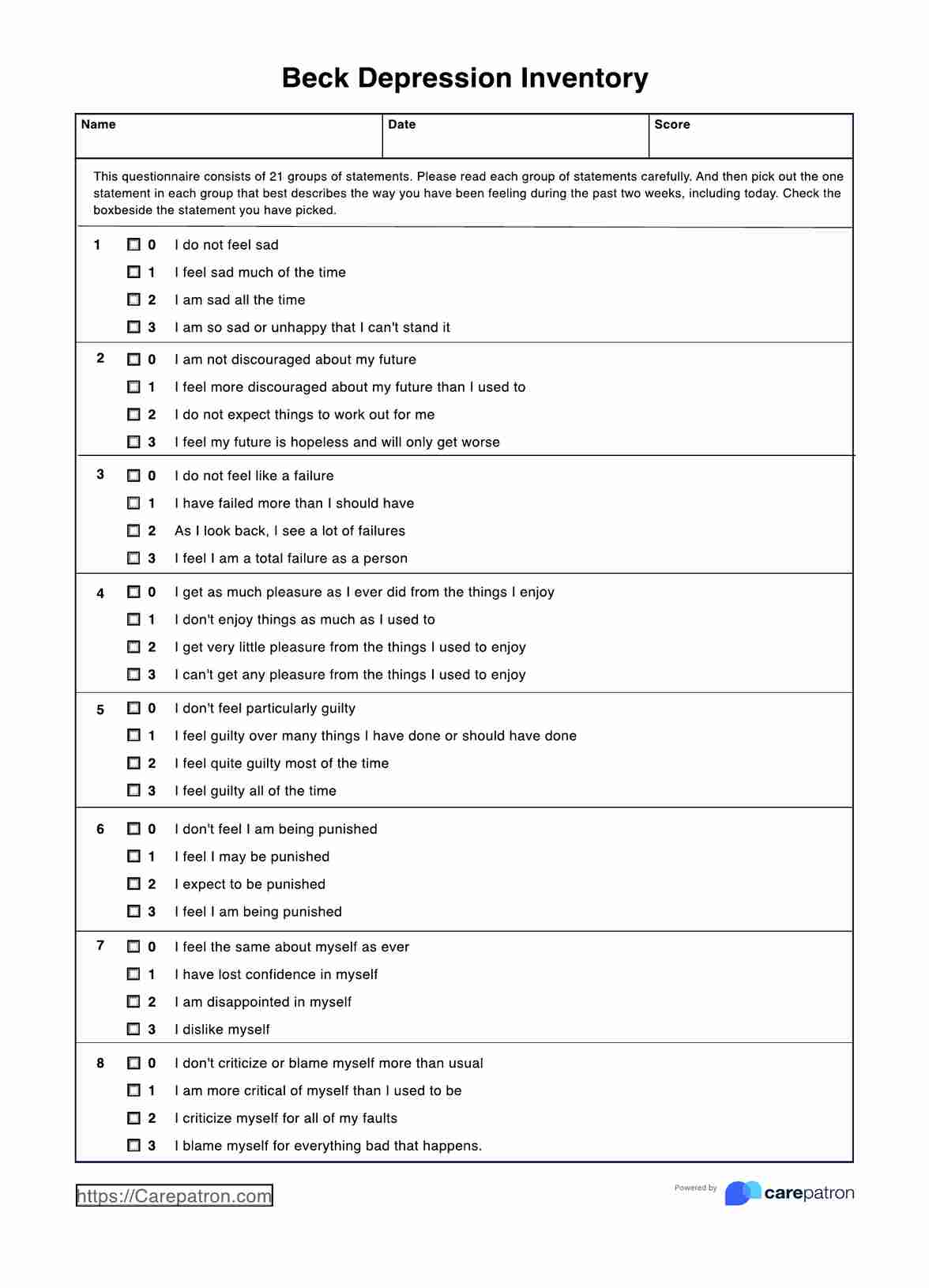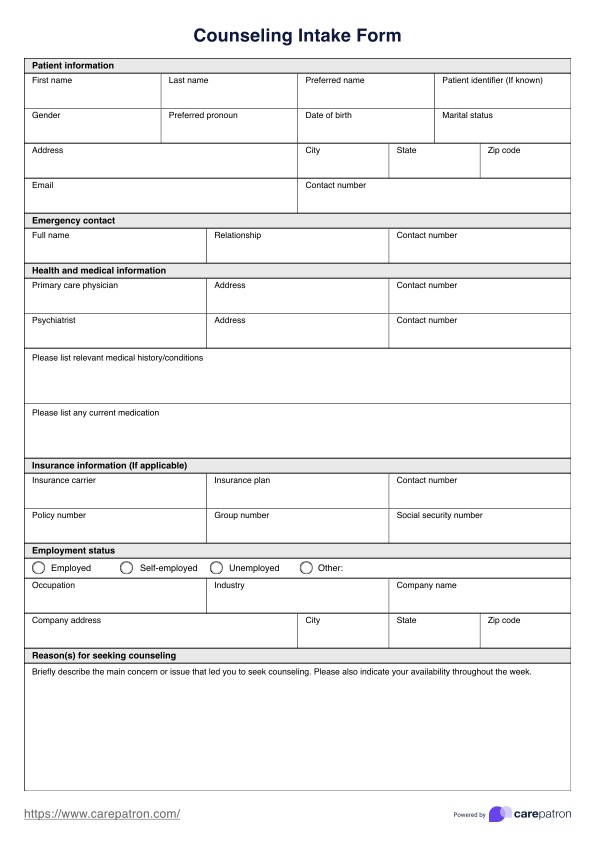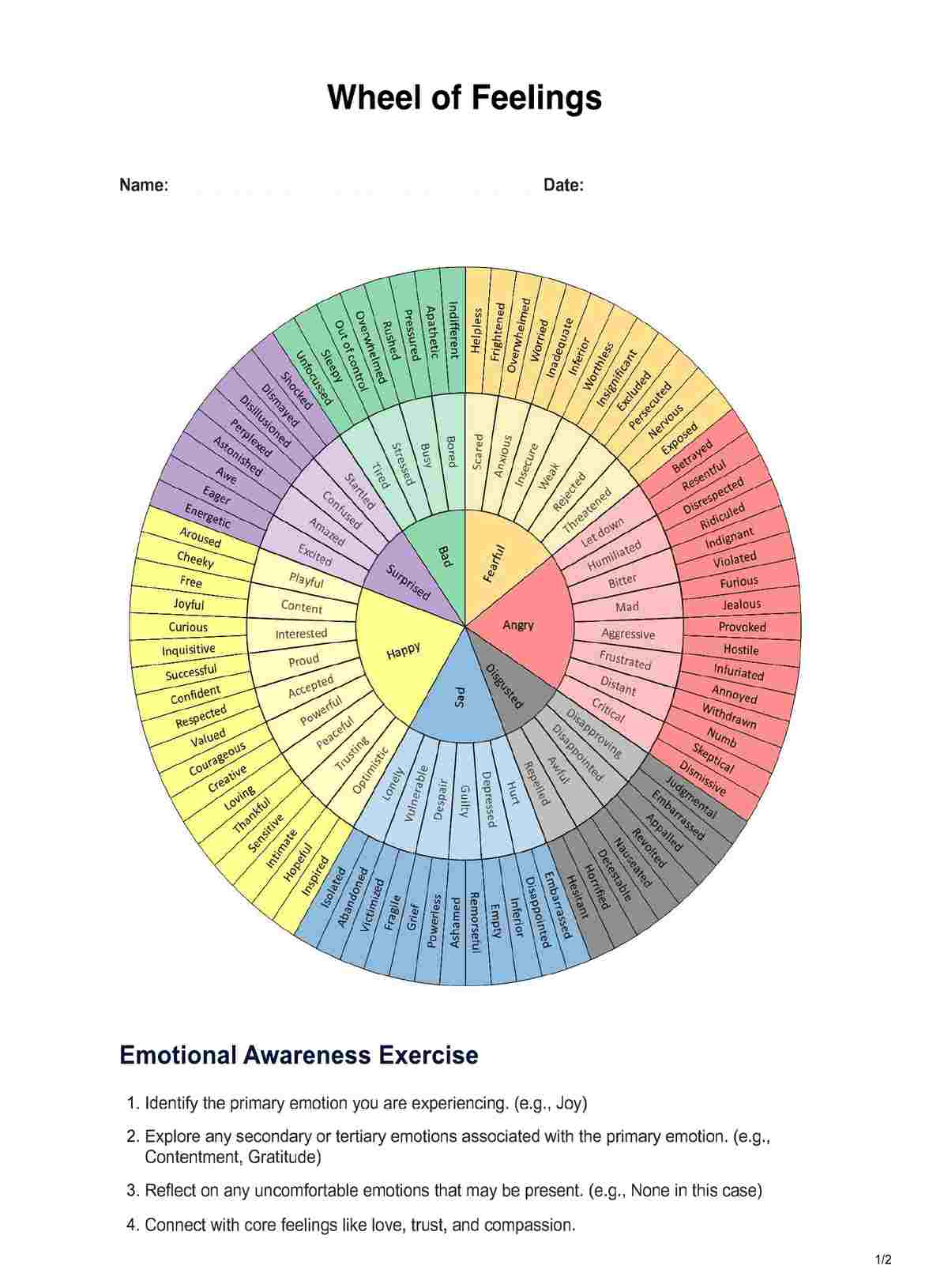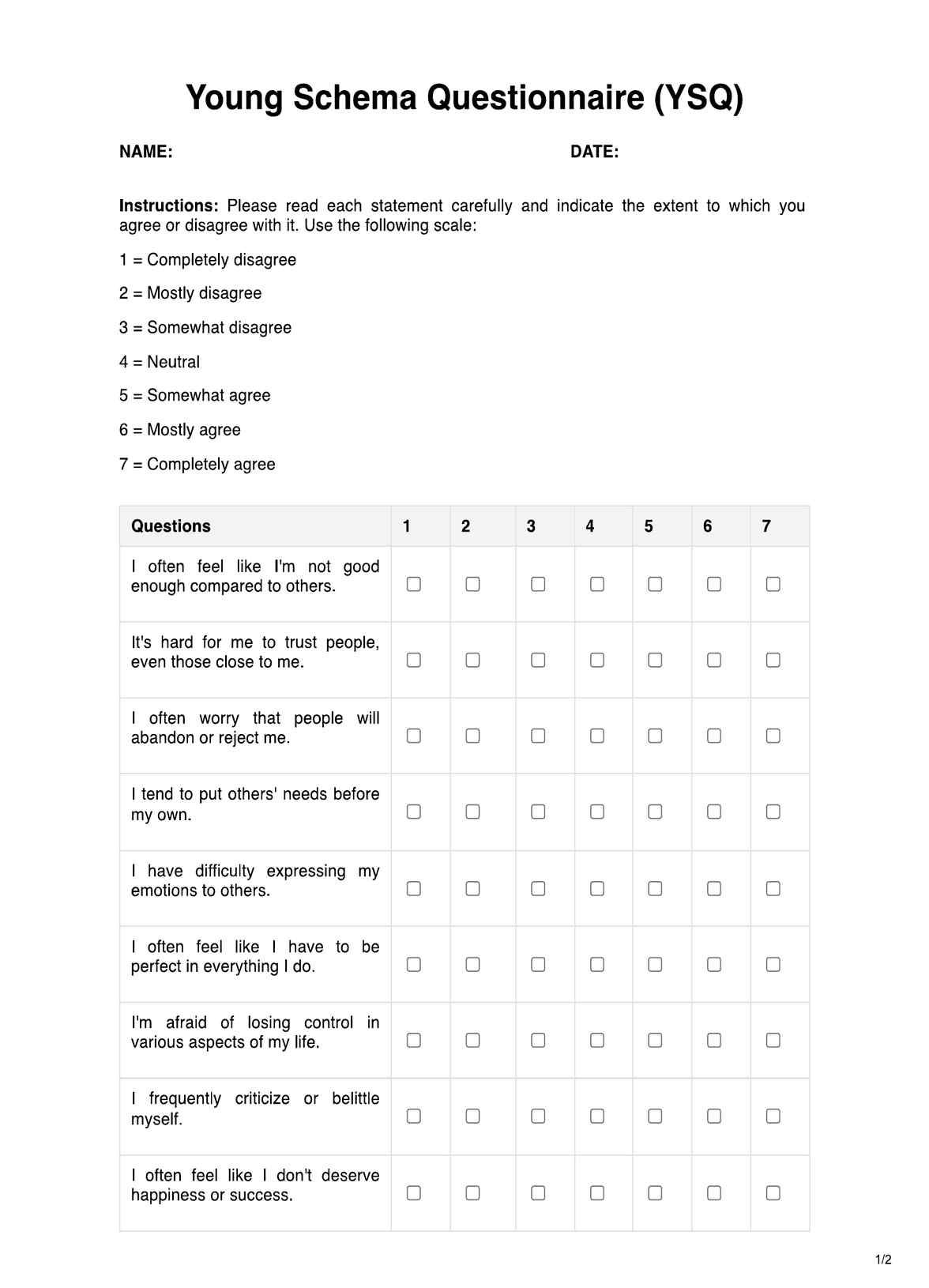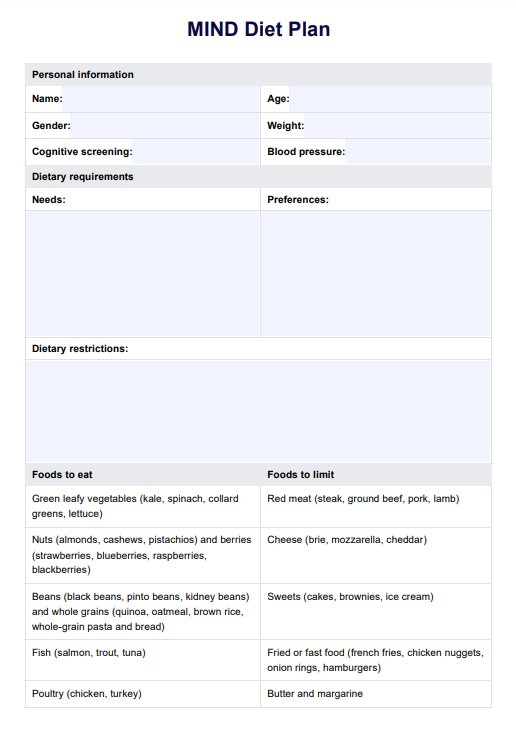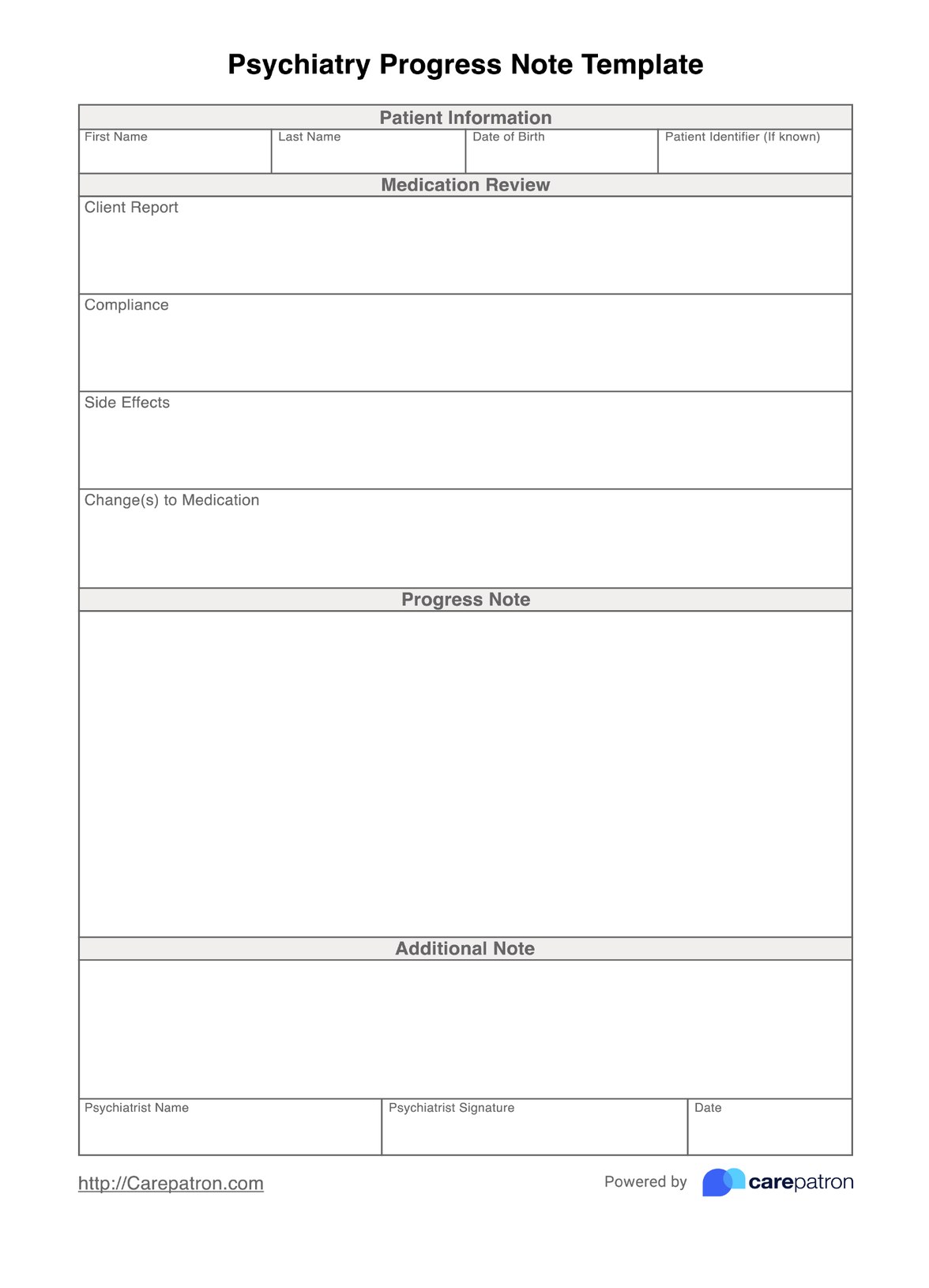Behavioral Activation for Depression Scale – Short Form (BADS-SF)
Learn about Behavioral Activation for Depression Scale – Short Form (BADS-SF). Obtain a free PDF example to comprehend its practical application.


What is behavioral activation?
is an approach to improving mental health by consciously choosing behaviors that influence how we feel. It's often used with cognitive behavioral therapy, but it can work independently too.
This approach is based on the idea that our actions affect our emotions. We can boost our mood by doing things that make us feel good or engaged. On the other hand, doing things that make us feel bad can worsen our mood and create a cycle.
For instance, if someone is feeling low, participating in enjoyable activities can uplift their mood. Conversely, consistently engaging in behaviors that contribute to negative feelings can deepen the emotional slump.
Therapists often recommend behavioral activation to address depression, where the inclination to partake in once-pleasurable activities is diminished. It can also be beneficial in addressing substance misuse by substituting harmful habits with healthier choices, thus aiding recovery and redirection.
In other words, behavioral activation empowers individuals to proactively shape their emotional well-being through mindful engagement in positive behaviors. It recognizes the profound connection between our actions and emotions, offering a practical method to alleviate mood disorders and facilitate positive change.
Behavioral Activation for Depression Scale – Short Form (BADS-SF) Template
Behavioral Activation for Depression Scale – Short Form (BADS-SF) Example
How to use the Behavioral Activation for Depression Scale – Short Form (BADS-SF):
Carepatron's printable Behavioral Activation for Depression Scale – Short Form (BADS-SF) resource provides a user-friendly method to effectively evaluate and address depression in your clients. Here's a guide on how to make the most of this valuable tool:
Step One: Access the resource
Retrieve your copy of the BADS-SF by clicking the link provided. It is readily available on the Carepatron app or within our extensive resources library.
Step Two: Familiarize your client
Introduce the resource's purpose to your client, ensuring they grasp how it operates and what specific insights you aim to gain from their responses.
Step Three: Collaborate with your client
Complete the BADS-SF questionnaire with your client, capturing essential information about their depressive symptoms and potential triggers. Take this opportunity to elucidate the significance of each question, helping your client gain a deeper comprehension of their mental health.
Step Four: Annotate additional notes
Incorporate supplementary notes highlighting recommended interventions, therapeutic strategies, or treatment plans tailored to your client's situation. Additionally, note any key queries your client poses for future reference.
Step Five: Review and strategize
Conduct a thorough review of the insights gleaned from the completed BADS-SF questionnaire. Engage in a collaborative discussion with your client, delving into the outcomes and potential avenues for enhancing their well-being. Elaborate on any proposed interventions or therapies that might prove beneficial based on their responses.
When would you use this Behavioral Activation for Depression Scale – Short Form (BADS-SF)?
The Behavioral Activation for Depression Scale – Short Form (BADS-SF) serves as a compass for both you and your client, enabling easy reference to gathered information as needed. You can leverage this assessment to:
Track Client Progress
The BADS-SF facilitates systematically tracking your client's emotional progress over time. It empowers you to chart shifts in their emotional state, record noteworthy changes in their condition, and document pertinent data such as treatment outcomes and potential triggers.
Capture Pertinent Information for Future Reference
Using the BADS-SF, you capture all the essential elements from your dialogue with the client. This ensures that crucial insights are stored for future use, serving as a valuable resource should they seek to revisit or reflect on the acquired information.
Stay Informed about the Latest Advancements in Therapeutic Approaches
The assessment also serves as a mechanism to stay aligned with the latest advancements in therapeutic strategies. It equips you and your client with insights into contemporary treatments, allowing for informed decisions regarding their mental health journey.
Tailor Treatment Approaches for Optimal Outcomes
Integrating the BADS-SF during consultations empowers you to profoundly understand each client's unique requirements. Armed with this knowledge, you can curate personalized treatment plans that are finely tuned to their needs, enhancing the potential for positive outcomes.
What are the benefits of using this Behavioral Activation for Depression Scale – Short Form (BADS-SF)?
Discover the advantages of integrating the Free Behavioral Activation for Depression Scale – Short Form (BADS-SF) assessment into your practice:
Customizable to Fit Your Needs
Tailor the assessment to match each client's distinct requirements effortlessly. Modify sections and introduce new elements to ensure it perfectly aligns with your therapeutic approach.
Versatility Across Medical Settings
The BADS-SF assessment proves valuable across various medical contexts. It suits a spectrum of treatments, encompassing physical therapy to mental health interventions. It transcends age, gender, and patient backgrounds, accommodating diverse demographics.
Cultivating Open Communication
Employing the assessment during consultations underlines your dedication to understanding your client's needs and apprehensions. It becomes a conduit to instill trust and foster candid conversations, nurturing a cooperative partnership.
Empowerment for Clients
Utilizing the BADS-SF assessment empowers your clients to engage in their healthcare journey actively. It encourages them to seek clarification, contributing to an environment where they assume a proactive role in their treatment plan. This empowerment translates into a heightened sense of control over their well-being.
Commonly asked questions
The time required to complete the Behavioral Activation for Depression Scale – Short Form (BADS-SF) varies, typically taking around 10-15 minutes.
The findings from the BADS-SF assessment are interpreted by assessing the individual's responses to gauge the level of depression and its impact on their behavior.
The BADS-SF is utilized to assess the level of depression and identify patterns of behavior that may contribute to or result from depressive symptoms.
The BADS-SF can be used by mental health professionals, therapists, counselors, and researchers to evaluate depression and behavioral patterns in individuals.


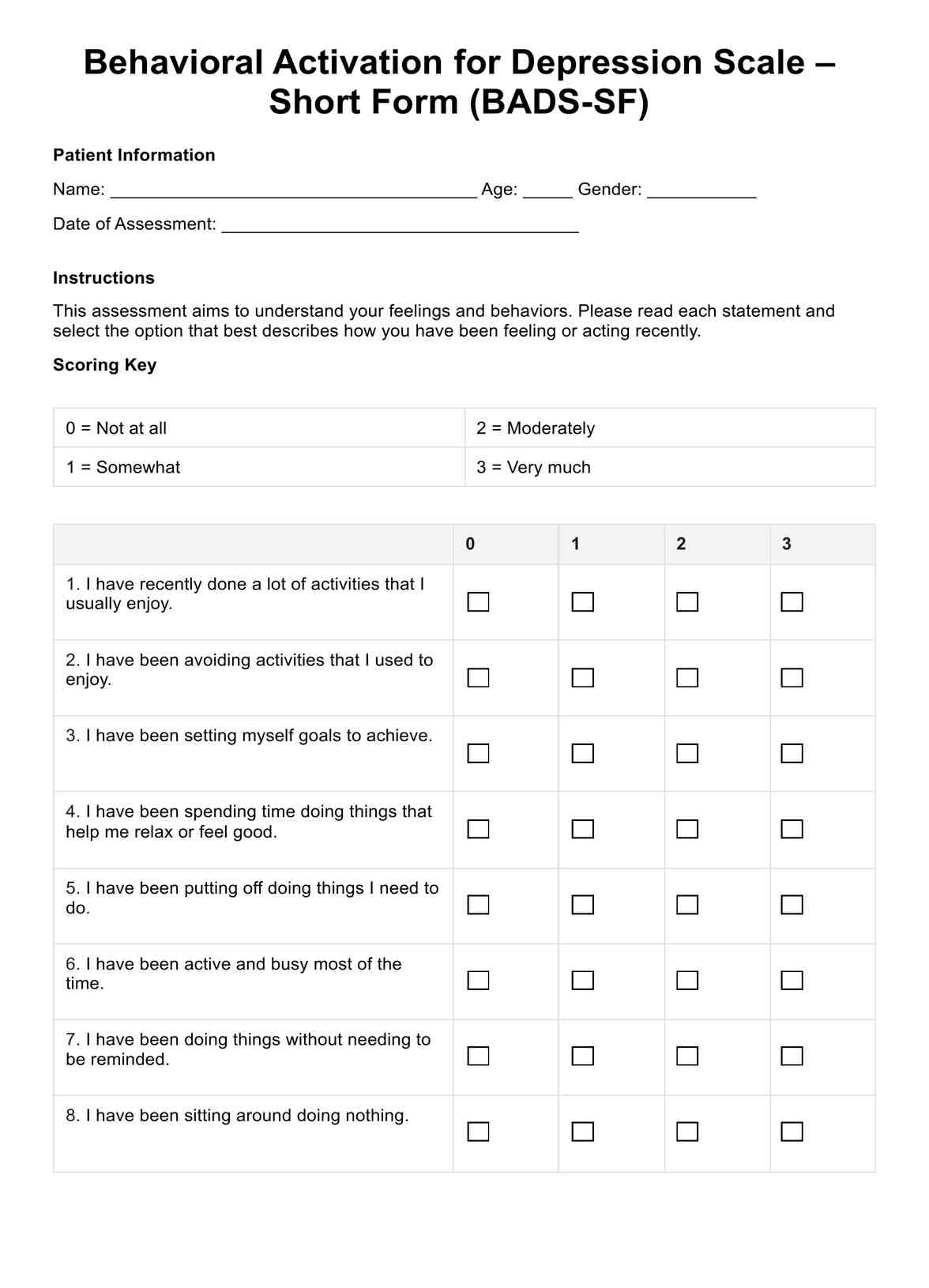
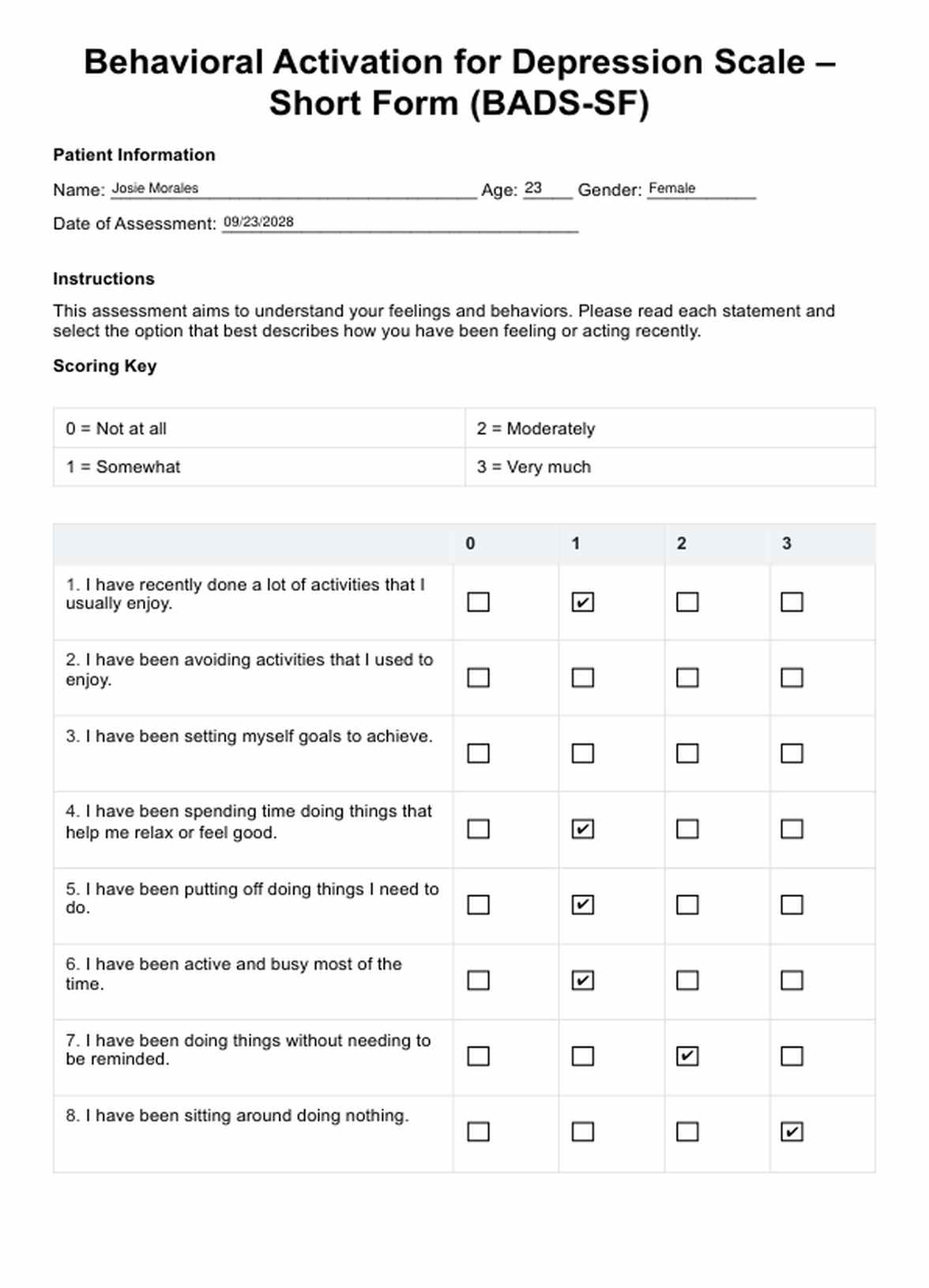















-template.jpg)





















































































